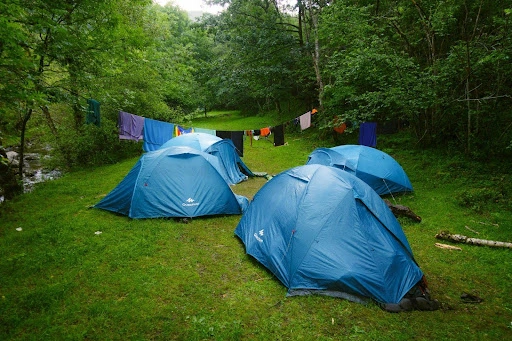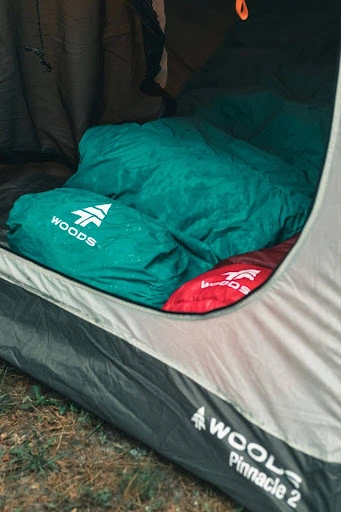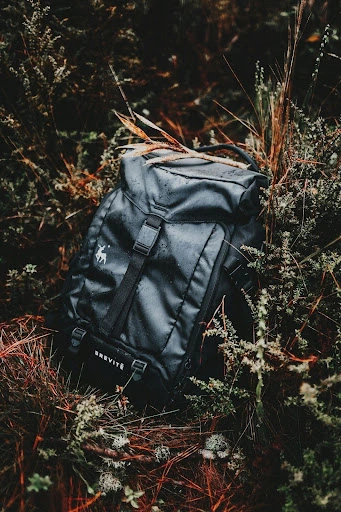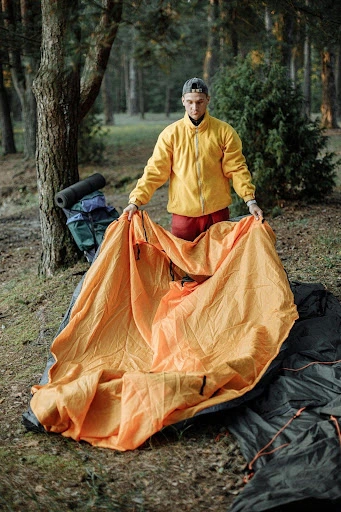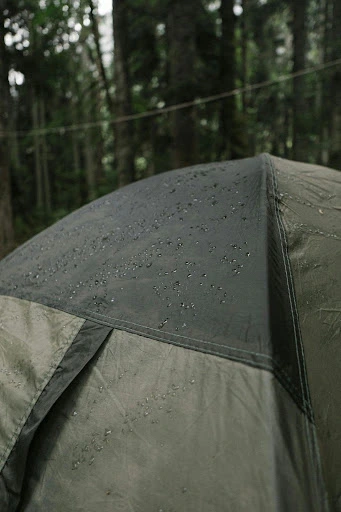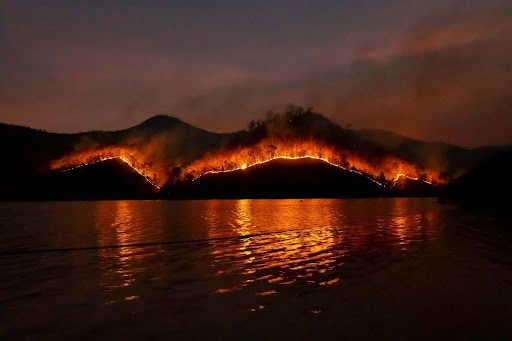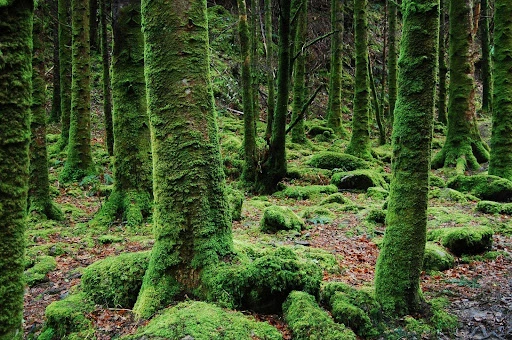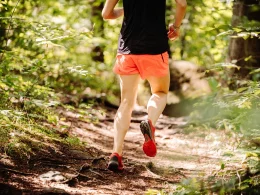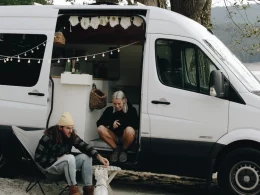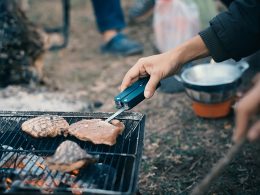You don’t have to get caught in a storm to end up with wet gear. A cool night, a bit of dew, a tent full of breath-by morning, everything’s clammy. The temptation is to ball it up and head home. Don’t. Drying your kit promptly is one of the cheapest ways to extend its life, keep it performing well, and avoid that unmistakable locker room smell that never quite leaves. Here’s what actually happens when gear sits wet, and how to treat different materials so they last.
Table of Contents
What Water Does When You Ignore It
Moisture is not neutral. Leave gear wet and balled up, and you create a warm, low-oxygen microclimate that microbes love. Mildew and mold take hold, producing stains (usually gray, green, or black freckles), musty odors, and, worse, enzymes that break down fibers over time. Dyes can bleed and transfer, metal parts can corrode, and glues can fail. Fabrics crease sharply and can “set” those creases, damaging coatings and laminates. The longer things stay damp, the harder it is to reverse the damage.
Different Materials, Different Problems
Each type of material used in your camping gear will be affected differently when exposed to moisture for long periods. Here’s a breakdown on what will happen to different materials if you are not drying the gear out in a timely manner.
Down insulation (sleeping bags, puffy jackets)
Down works by lofting tiny plumes that trap air. When it gets wet, it clumps and loses its loft, so you get cold. Stored wet, down can develop mildew that permanently reduces fluff and leaves a sour smell. Dry it thoroughly and gently: low heat in a dryer with clean tennis balls or dryer balls to break up clumps, checking often. Air-drying works too, but takes time-be sure it’s bone dry before storage. Avoid high heat; it can scorch shell fabric and weaken seam tape.
Synthetic insulation (e.g., PrimaLoft)
Synthetics retain more warmth when damp and dry faster than down, but they’re not indestructible. Long, wet compression can create permanent cold spots by bending fibers. Mildew and odor-causing bacteria still thrive. Wash with a gentle technical detergent, rinse well, then air-dry flat or tumble on low. Skip fabric softeners-they coat fibers and reduce loft.
Nylon and polyester shells (jackets, tent flies)
These fibers themselves don’t feed mildew, but dirt, skin oils, and food residue do. Wet storage encourages mildew staining and can degrade the DWR (durable water repellent) that helps water bead. Many tents and rain jackets use PU (polyurethane) coatings on the inside; stored damp, PU can undergo hydrolysis, turning sticky, flaky, and smelly as it breaks down. Once PU peels, that fabric is no longer waterproof. Silicone-coated fabrics (silnylon/silpoly) resist hydrolysis better, but they can still pick up mildew stains and lingering odors if packed wet. Dyneema Composite Fabric (DCF) doesn’t absorb water and dries fast, but adhesives and seam tapes can creep if stored hot and wet. Bottom line: dry them open and flat, not folded tight.
Waterproof membranes and seam tape (e.g., Gore-Tex)
Prolonged damp plus heat can shorten the life of seam tape and liners, causing peeling or bubbling. Dry gently, then re-activate DWR with low heat if the brand recommends it (read the tag). If tape is lifting, stop using high heat; re-sealing may be possible depending on the item.
Keep Your Clothing Dry
Clothing is probably the worst thing to keep damp over long periods as it can quickly destroy the item. As with your camping gear, different clothing materials will also react differently to moisture. Here’s what to look out for!
- Wool manages moisture well and resists odor, but heat plus agitation can felt it. Dry flat and away from high heat.
- Synthetic base layers (polyester/nylon) dry fast but can harbor stubborn smells if packed wet. Wash soon with a sport wash that targets odor bacteria.
- Cotton weakens when mildewed, stains easily, and dries slowly. If it gets musty, wash, sun briefly, then air-dry in shade to avoid UV damage. (And maybe rethink cotton for trips.)
- Footwear. Leather and fabric boots soak up water, and wet leather can stiffen and crack as it dries too fast. Insoles, midsoles, and glues can delaminate if they sit damp. Eyelets and speed hooks can rust. After a soggy trip, remove insoles, loosen laces, stuff with newspaper or clean rags (swap as they get damp), and dry in moving air-never against a heater or campfire. Condition leather lightly once dry.
- Backpacks. Foam back panels and hip belts hang onto moisture; if stored wet, they go musty fast. Metal stays can corrode at contact points. Unclip everything, shake out grit, wipe, and hang to dry fully with pockets open and zippers unzipped.
The easier way to remember it is that a tight, wet bundle traps humidity and heat. It’s a good idea to create a post-trip routine where you air out everything you took with you on the trip.
A Simple Post-Trip Drying Routine
- Unpack immediately. Even if you’re tired, get the wet stuff out.
- Pitch and open. Set up the tent indoors or in the yard; drape the fly and footprint separately so air reaches both sides.
- Fluff insulation. Shake out sleeping bags and jackets. For down, finish with a low-heat tumble and dryer balls until loft returns and seams feel dry.
- Increase airflow. Fans beat heaters. Warm, dry moving air is ideal. Avoid blasting high heat at close range.
- Target trouble spots. Remove boot insoles, open pack pockets, and unzip everything. Wipe metal parts dry.
- Clean before storage. Dirt + damp = mildew. Follow care labels; use technical wash for shell fabrics, gentle soap for tents, and avoid fabric softeners and bleach.
- Fully dry, then store loose. Sleeping bags and puffy jackets go in large breathable sacks, not compression bags. Tents go loosely folded or rolled in a breathable bag; keep them out of hot attics and car trunks.
- Sunlight: Friend and Foe: A brief sun session helps kill surface microbes and speeds drying, but UV degrades nylon and polyester over time. Use morning or late-day sun for a short stint, then move to shade with airflow. Don’t leave gear baking for hours.
Odor and Mildew Rescue
Caught it late, and things smell off? Wash with the right cleaner (sport/tech wash for synthetics; down wash for down). For tents and packs, a tub soak in lukewarm water with a gentle soap can help; rinse thoroughly. To treat light mildew on tents, a mild solution of unscented gentle soap works-avoid harsh chemicals that can damage coatings. Dry completely, then consider re-applying DWR to shells that have stopped beading water.
Final Thoughts
Drying your gear isn’t fussy, it’s protective. You’ll keep insulation lofty, rainwear waterproof, tents clean and non-sticky, boots comfortable, and everything free of that “forgotten gym bag” smell. A half hour of attention when you get home can add years to the life of your kit and make the next trip warmer, drier, and a lot more pleasant. Dry it right, store it loose, and your future self will thank you.

